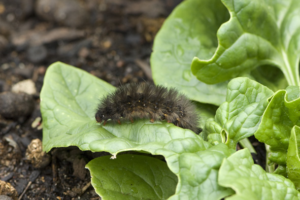Physical Address
23,24,25 & 26, 2nd Floor, Software Technology Park India, Opp: Garware Stadium,MIDC, Chikalthana, Aurangabad, Maharashtra – 431001 India
Physical Address
23,24,25 & 26, 2nd Floor, Software Technology Park India, Opp: Garware Stadium,MIDC, Chikalthana, Aurangabad, Maharashtra – 431001 India

Global climate change has a significant impact on agriculture as well as insect pests. Agricultural crops and their corresponding pests are directly and indirectly affected by climate change and it is a highlighted issue in today’s society. The possible effects of changing climate on insects are,
FAO estimates that up to 40 percent of global crop production is annually lost to pests. Each year, plant diseases cost the global economy over $220 billion and invasive insects at least $70 billion. Climate change-induced pest dispersal and intensity threaten food security as a whole. Smallholders, people whose livelihoods rely on plant health, and those who live in countries beset by food insecurity are especially vulnerable. Read the full article here Archived.
Current best estimates of changes in climate indicate an increase in global mean annual temperature of 1°C by 2025 and 3°C by the end of the next century. Insects must eat more to survive and it’s expected that insect herbivores will consume more and grow faster. This will lead to increases in the population growth rate of certain insects.
Such increases in temperature have a number of implications for temperature-dependent insect pests in mid-latitude regions. For example, under warmer conditions, aphids are less susceptible to the aphid alarm pheromone they normally release when threatened by insect predators and parasitoids, which can lead to increased predation. Whitefly populations are primarily regulated by environmental factors such as temperature, precipitation, and humidity in general. High temperature along with high humidity correlates positively with whitefly population build-up. More can be read here, archived.
Changes in the amount, intensity, and frequency of precipitation are very important indicators of climate change. As observed in most events, the frequency of precipitation has decreased while the intensity of precipitation has increased. These types of rainfall patterns have favored the occurrence of droughts and floods. In short, insect eggs and larvae can be washed away by heavy rains and flooding. On the other hand, dry climates may provide suitable environmental conditions for the development and growth of herbivorous insects. More can be read from here Archived.
An increase in the amount of carbon decreases plant defenses. Global levels of CO₂ are already high, and they’re expected to continue rising. While elevation in CO₂ does not directly impact insects, it can alter plants’ nutritional quality and chemistry. This will indirectly affect insect herbivores. For instance, according to recent research, elevated CO₂ reduces the nutritional quality of plant tissues by reducing protein concentrations and certain amino acids in the leaves. To compensate, insect herbivores must eat more. More can be read from here Archived.
New invasive species are being introduced in many parts of the world, due to climate change. Invasive pests are also one of the main drivers of biodiversity loss. Some pests, like fall armyworm (which feeds on a growing number of crops, including maize, sorghum, millet) and tephritid fruit flies (which damage fruit and other crops), have already spread due to warmer climate. Others, such as the desert locust (the world’s most destructive migratory pest), are expected to change their migratory routes and geographical distribution because of climate change. More can be read from here Archived.
Effective monitoring and management systems are needed to prevent invasive species from becoming an economic burden in new geographic regions. Therefore, adaptive responses in both pest management and biosecurity will be required.
With the increasing resistance of many insect pest species to chemical insecticides and an increasing organic food market, pest control strategies are slowly shifting towards more sustainable, ecologically sound, and economically viable options. Biologically based pest management strategies present such opportunities through predation or parasitism of pests. Additionally, direct or indirect defense mechanisms of plants can be an important component in sustainable integrated pest management.
The efficacy of biological control systems is highly dependent on natural enemy-prey interactions, which will likely be modified by changing climates. Therefore, knowledge of how insect pests and their natural enemies respond to climate variation is of fundamental importance in understanding biological insect pest management under global climate change.

The world’s first International Plant Health Conference was held in September 2022 to set a global agenda on biosecurity and address challenges in plant health. Jingyuan Xia, Director of the Plant Production and Protection Division, FAO who participated said that climate change and human action have altered ecosystems and created new niches where plant pests and diseases can thrive.
As climate change exacerbates the pest problem, there is a great need for future pest management strategies. When combating pests and diseases, farmers should adapt and policymakers should encourage the use of green farming methods on a global scale.